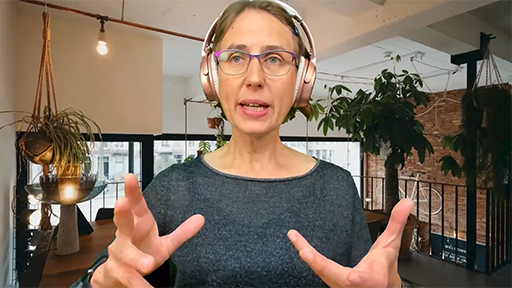4 Team working agreements
Before exploring communication and collaboration further, understanding the context in which you work is key to good communication. This is especially true if you are part of a team, as how you communicate and collaborate is an extension of both your team and your organisation, so you need to be mindful of how you operate.
A useful approach for hybrid working, if you are part of specific team/group of people, is to create a ‘team working agreement’ together, focused on your expectations of how you collaborate and communicate. Without the opportunities that being in the office together enable, agreeing how you want to work becomes even more important.
In the video below, Lisette Sutherland, director of Collaboration Superpowers, discusses how to keep the feeling and sense of a team when hybrid working, and she explains the purpose and benefit of creating a ‘team working agreement’.

Transcript
Activity 14 Create your own team working agreement
In this activity you will have the opportunity to explore how team working agreements can be created, and we take you through the steps to do this. This is an activity you may prefer to do once you have finished the course; in Step 4 there are links to further guidance for creating you team working agreement.
Step 1: What communication channels do you have?
Consider the primary channels of communication within your organisations. Review the list below and make a note of what these are within your own organisation and how you use them in your team.
The following are considered the primary channels of communication in a workplace:
In person
Documents
For example, can include:
- Company and HR policy documents
- Benefits forms
- Legal guidelines
Emails
Instant messaging platforms
Video conference
Phone calls
Social media.
Step 2: How effective are these channels?
Consider how effective the management of communication channels is within your organisation and team and whether they enable the following. Make a note of what works well and what might require improvement.
The primary channels of communication are important, as they deliver communication in an instant and timely manner, which ensures:
- All team members receive the same information
- Employees know what is expected of them
- Discussion, feedback and interaction
- Opportunities for employees to make suggestions and voice concerns or questions
- Stronger relationships between employees.
Step 3: What communication channels are best?
Read the article from Gartner (Wiles, 2017), ‘How to choose the right communication channel’ [Tip: hold Ctrl and click a link to open it in a new tab. (Hide tip)] , and take time to look at the table within the article which helps you consider – How does your target audience like to consume information?
The article was written in 2017. Consider how you communicate now. Are there better ways and tools available to you for communicating and collaborating now?
Step 4: Create your ‘team working agreement’
Lisette Sutherland is an expert in remote working and collaboration, and she has provided a freely available ‘Facilitator's guide’ with tips, step-by-step instructions and resources to help you run a meeting with your team to create a ‘team working agreement’. The following extract provides the context:
‘This meeting agenda template helps remote teams create a “working team agreement.” This is a living document that sets expectations and captures agreements about how a remote team will work together. Together, you'll establish a basic set of guidelines for working together, to remove costly misunderstandings.
‘During this meeting, you'll lead the group through a series of questions that explore everyone's preferences and expectations. Then, you'll work together to create your team agreement.’
Download the ‘Lucid Facilitator’s Guide: Create a Remote Team Working Agreement’, and review the process within it. If you feel it is a tool that would benefit how you work as a team, and you are comfortable facilitating a meeting, work with your team to create a ‘Team Working Agreement’.
You can download the guide from Lucid website at the link below.
- How to Create a Remote Team Working Agreement
- Create a remote team working agreement (to download)
You may also like to explore this article that provides further information and a podcast on how to create your agreement:
- ‘Create a team agreement for your remote team: a guideline for creating a Remote Team Agreement’ (Collaboration Superpowers, n.d.)
- Create a team agreement for your remote team: a guideline for creating a Remote Team Agreement (to download)
Digital wellbeing
Digital wellbeing is an important topic. You should bear in mind the wellbeing of your team members and other people you communicate or collaborate with digitally, as well as your own wellbeing.
You organisation may have guidance that you can refer to, and the course Hybrid Working: wellbeing and inclusion within the ‘Supporting hybrid working and digital transformation’ collection explores digital wellbeing further.
